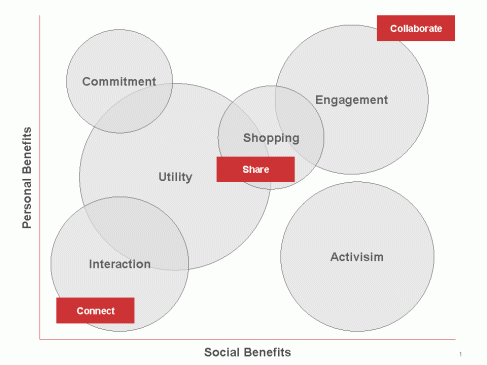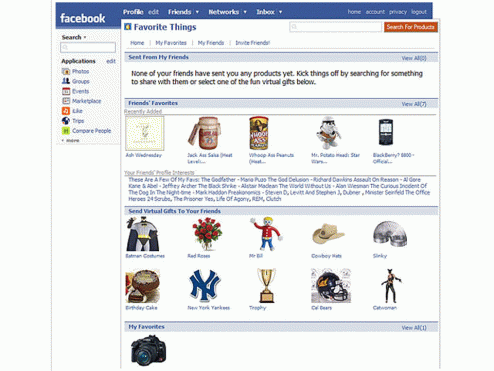Like products, companies and celebrities, nations have brands, and these brands have attributes that describe them and value that is associated with them. Hosting the Olympic Games provides a unique opportunity for a country to both influence global perceptions about their national brand and enhance their nation’s brand value by showcasing itself before the entire world.
With the next summer and winter games set to take place in Beijing, China (2008) and Vancouver, Canada (2010), respectively, it is hard not to make the comparison between these national brands, and especially, in terms of how each brand relates to the environment. Any comparison, however, requires a caveat as these nations differ greatly in terms of their histories, population sizes and stages of economic development. Nonetheless, a comparison is justified based on how these national brands are perceived globally today, as well as how these nations are working to enhance their brand images – positive or negative – going forward.
Simon Anholt’s National Brands Index (NBI) is one way to evaluate national brands based on “how a country is seen by others” today. NBI compiles brand attributes “across six dimensions of national assets, characteristics, and competence [including] exports, people, governance, tourism, culture and heritage and immigration and investment”.
While the environment is considered explicitly as part of the governance category (which “considers people’s perceptions of the government’s behaviour towards the global environment”), the environment is, in fact, implicit in other category questions as well. For example, perceptions about air quality and water-borne pollution directly affect someone’s likelihood to visit (tourism category) or live and work in a country (immigration and investment).
In fact, it could be argued that the environment may be a bellwether indicator of how the global community perceives national brands. An NBI report states that “even if nations themselves don’t change, people’s values can and do, affecting the way they perceive nations”. For example, “growing ‘green’ consciousness among some sections of the world’s population, benefiting those nations…that have a good reputation for environmental responsibility”, and perhaps detract from others that are less responsible.
In NBI’s recent survey of 38 nations, Canada is ranked 4th (behind the UK, Germany and France) while China is ranked 23rd. (The US is ranked 10th).
It is not only this difference in ranking that is significant, but that China’s brand image is losing ground. In fact, its brand score had the highest overall decline (-4%) of any ranked nation over the last year an a half. Moreover, significant areas of decline include brand perceptions regarding China as a place to “live and work” (-11.4%) and to visit (-13%) – all issues that may be relate to perceptions about the environment. (Anholt Nation Brands Index Special Report Q2 2007).
Such brand perceptions also translates into differential national brand values. Brand Finance estimates national Brand Values based on a 5-year forecast for gross domestic product (GDP) and incorporates “brand ratings for each nation [including] seven economic performance measures (Source: IMD), eight infrastructure and efficiency measures (Source: IMD) and six consumer perception measures (Source: NBI).”
The chart below displays Brand Values for the top ranked nations by GDP. Adding GDP – a measure of the output from all domestic economic activities associated with a nation – helps put Brand Value into context.

Brand Value from Anholt Nation Brands Index Special Report Q1 2007; GDP (nominal) from World Bank, 2006 as cited in Wikipedia
Not surprisingly, for most nations, Brand Value is correlated with GDP, as Brand Finance’s estimate of Brand Value begins with a five-year GDP forecast. In fact, Brand Value is measured as a multiple of GDP for 8 of the top 9 countries in terms of GDP – meaning that brand value is worth considerably more than the annual output from each nation. (Brazil’s Brand Value was not available from the referenced Index as it is not ranked among the top 10). In noticeable contrast, China – while the only developing nation among the top 9 nations – is the only country in which its Brand Value is a fraction of its GDP.
All this many not be surprising, however, as China’s reputation has suffered in recent years: in its race to industrialize it has turned a blind eye from the suffering in Darfur as it contracts for oil from the Sudanese, manufactured low cost toys and pet food tainted with poisons, and spoiled much of its environment in the process. In fact, environmental degradation is widespread and on a scale perhaps never seen before. A recent report co-authored by the World Bank and the Government of China summaries this impact in human health and GDP:
ᅳ “The combined health and non-health cost of outdoor air and water pollution for China’s economy comes to around $US100 billion a year (or about 5.8% of the country’s GDP) [and 750,000 premature deaths annually according to the New York Times]
ᅳ Air pollution, especially in large cities, is leading to higher incidences of lung diseases, including cancer, respiratory system problems and therefore higher levels of work and school absenteeism
ᅳ Water pollution is also causing growing levels of cancer and diarrhea particularly in children under 5
ᅳ Water pollution is further exacerbating China’s severe water scarcity problems, bringing the overall cost of water scarcity to about 1% of GDP” (World Bank and Government of China, “Cost of Pollution in China – Economic Estimates of Physical Damages”, 2007)
The 2008 Olympic Games only serve to highlight this environmental degradation as air pollution in Beijing has raised concerns from global athletes who threaten to stay away if the skies do not clear during the event. The Chinese say the air will be clear during the Olympics but initial tests that banned 1MM cars from the road had mixed results.
Either way, the damage may already have been done to the Chinese brand in the short term. Air quality – good or poor – will certainly be the talk of the town during the summer games and will inevitably shed more light on China’s growing environmental problem.
But, for the Chinese and the environment, perhaps some good will come of this over time. There is already talk of environmental reform and greater regulatory controls within the central government. Chinese leaders, however, still need to find incentives for provincial leaders to enact them. Moreover, if the Chinese are successful in cleaning up the air during the games, Beijing residents will certainly talk about how ‘unnaturally’ clean the air is – perhaps creating grassroots support to have better air quality after the closing ceremonies.
The story in Vancouver – and across the rest Canada – is quite different. Like the rest of the G8 nations, Canada did not industrialize without a price – contaminated sites, clear cut forests and mines that drain acid to the surrounding lands and waters and continue to plague the environment and compromise human health. Moreover, Canada has its own Love Canal, a symbol of all what is wrong with unregulated industrialization and the site of human suffering that followed.
But, it is difficult to compare the sheer scale of the problem that China now confronts. In fact, most of Canada escaped industrialization relatively unscathed. Many, including Paul Lavoie, Chairman and Chief Creative Officer of Taxi, a premier Canadian advertising firm, think that Canadians should now use their relative greenness to their advantage.
In a keynote address at the Canada 2020 conference last year, Lavoie argued that Canadians had an “opportunity to manage [its] natural resources to insure economic, environmental and social success. He continued, “In this period of high demand, we have a window of opportunity to develop a national natural resources strategy aimed at maximizing economic benefits while ensuring the long-term sustainability of our resources and environment.”
To do so, Lavoie proposed that Canada should create a new brand for the nation and Canadian businesses. This brand – Outside thinkers – would be demonstrated by shifting from natural resource extraction to idea generation in order to capture more economic and brand value going forward.

Lavoie spoke, “It’s about the relationship between nature and innovation. Nature has been our greatest challenge, and our greatest inspiration. Its geography, climate and force have made us think outside convention to survive.”
“Let’s look outside and see nature as our inspiration to innovate: Many Canadian products and services could be marketed with more success if they rallied around the common brand values and standards of a uniquely Canadian concept.”
“ ‘Outside thinkers’ [offers] a clear and shared personality and promise of innovative design, quality workmanship and an orientation to sustainability across all categories. A strong central message repeated consistently will build a clear perception and expectation in the minds of consumers, trade partners and governments. This is the hallmark of a great brand.”
Lavoie supports this brand with three pillars that represented a shift in Canadian thinking:
A Shift from a “land of stuff” to a “land of ideas”. Lavoie argued: “By treating our natural resources like commodities, we are selling them short when we should be selling them at a premium and getting the recognition for it.”
A shift to innovation. Lavoie elaborated that the Anholt NBI identified distinct attributes of Canadians: “Trustworthy, honest, gentle moral conscience, friendly, [and] tolerant.
His response: “I don’t think this image is a complete representation of all Canadians, especially the younger, more confident, ambitious generation, many who are in this room who want to be actively involved and be a little more than happy yet passive bystanders. I believe there are two potential characteristics that are missing. I would like to set as an objective of this exercise to foster and encourage the addition of: confidence and innovation. With confidence you can do anything. With innovation you do the right thing!”
A shift to sustainable solutions. Lavoie said that Canadians should shift to more value added services (and reduce the export of raw materials) while providing what the world wants: sustainable products and services.
So, globally, perceptions toward national brands – specifically China and Canada – vary substantially today. Perceptions about the environment are an important part of this difference. While the Olympics offer the opportunity to shape these perceptions in a positive way, it is unclear whether China will be able to do so given the systemic pollution that permeates life across much of China – including Beijing, the Olympic host city.
In contrast, the Canadian national brand will likely benefit from Vancouver hosting the Olympics given that brand perceptions are already very favorable today and the relative pristine physical environment of British Columbia will only reinforce this perception when visitors arrive for the games. Moreover, as Paul Lavoie suggests, Canada may have the opportunity to build on this perception by creating a national brand synonymous with sustainability. Perhaps this is Canada’s ticket for overtaking the UK, Germany and France as the top national brand globally.











